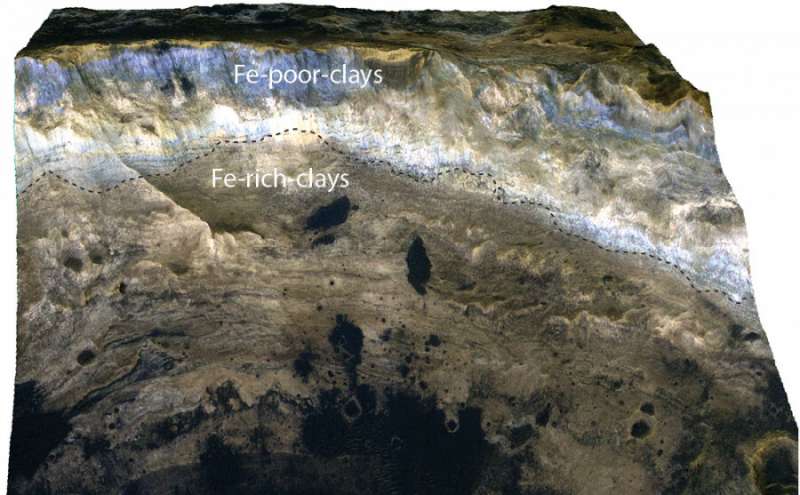Remote sensing is only useful if scientists have an idea of what they are looking at. That knowledge is especially important for remote sensing applications on other planets, such as Mars, where it is extraordinarily difficult to collect information about an observed object in any other way. To make up for the lack of ability to perform other tests in situ, scientists set up laboratory experiments with different environments and materials and compare the remote sensing data with the observed remote objects.
That is exactly what Jiacheng Liu, a doctoral student at the University of Hong Kong, did with remote sensing data from the surface of Mars. What he found gave new weight to a novel theory - that Mars didn't used to have a significant amount of oxygen in its atmosphere. The fact that it does now prompts the question of where all the oxygen that exists in the atmosphere today came from. One possible answer is the same place it came from on Earth - photosynthetic life.
UT Video discussing the Martian atmosphere.Mars is commonly called the "red planet" because most of its surface is covered in iron oxide, commonly referred to as rust, which has a red hue. Not all parts of the planets are red though - there are some volcanic rocks that do not contain much iron, and are therefore not subject to the oxidizing reaction that blankets so much of the rest of the planet.
Those same volcanic rocks are also insightful windows into the atmospheric chemistry of Mars that isn't affected by oxygen. Dr. Liu discovered that the evolution of basalt and other minerals found on Hainan Island in Southwest China were good proxies for the exposed volcanic rock found on Mars.
Importantly, that exposed rock on Mars was old, and would have last interacted with the Martian atmosphere billions of years ago. Its structure showed that it was last exposed to an environment that did not contain much oxygen, as the iron contained in the rocks was not yet oxidized.
Such a low oxygen environment was present on Earth as well billions of years ago. Then, approximately 2.5 billion years ago, a switch to an oxygen-rich atmosphere took place called the Great Oxidation Event. Scientists believe the impetus for this transition was multicellular life performing photosynthesis and replenishing oxygen in the atmosphere, as it was also being captured in iron oxide as well.
So far, there has been no such explanation for what caused Mars' atmosphere to gain so much oxygen. There are non-biological processes that could be responsible for such a transition. But it does open the tantalizing possibility that, long ago, when Mars was warmer and wetter, it underwent an explosion of life that caused it's atmosphere to change to what it is today. As with so much other science, more data is needed though, as "extraordinary claims require extraordinary evidence".
Learn More:
UHK : Planetary scientists discover evidence for a reduced atmosphere on ancient Mars
UT: What is the Atmosphere Like on Mars?
Syfy: Mars May Look Like An Alien Wasteland, But We Now Have More Evidence It Could Have Once Been Another Earth
Lead Image:
Strata on Mars that shows iron rich rocks (blue) that were long buried alongside longer exposed rocks (yellow).
Credit: University of Hong Kong
 Universe Today
Universe Today


